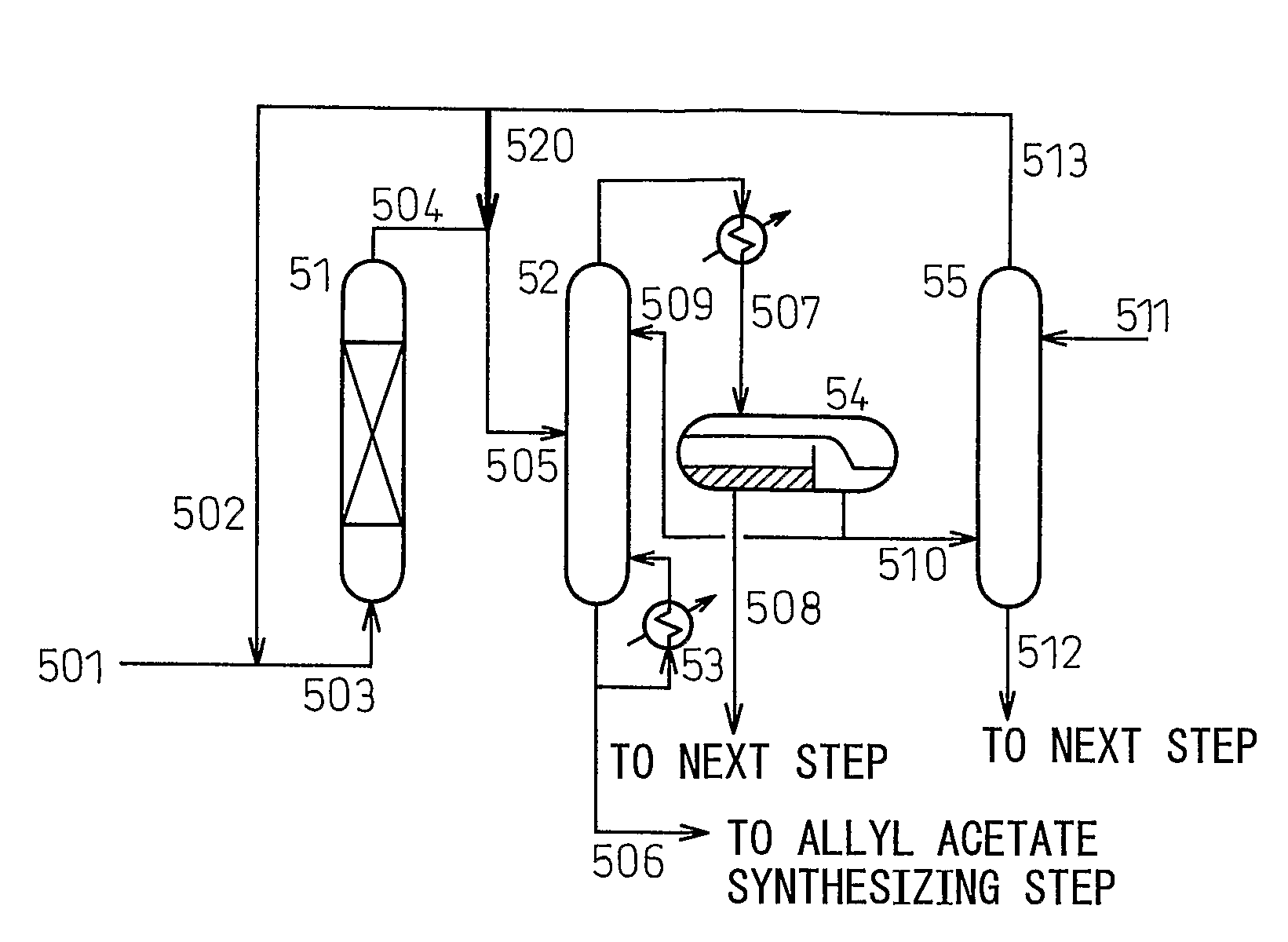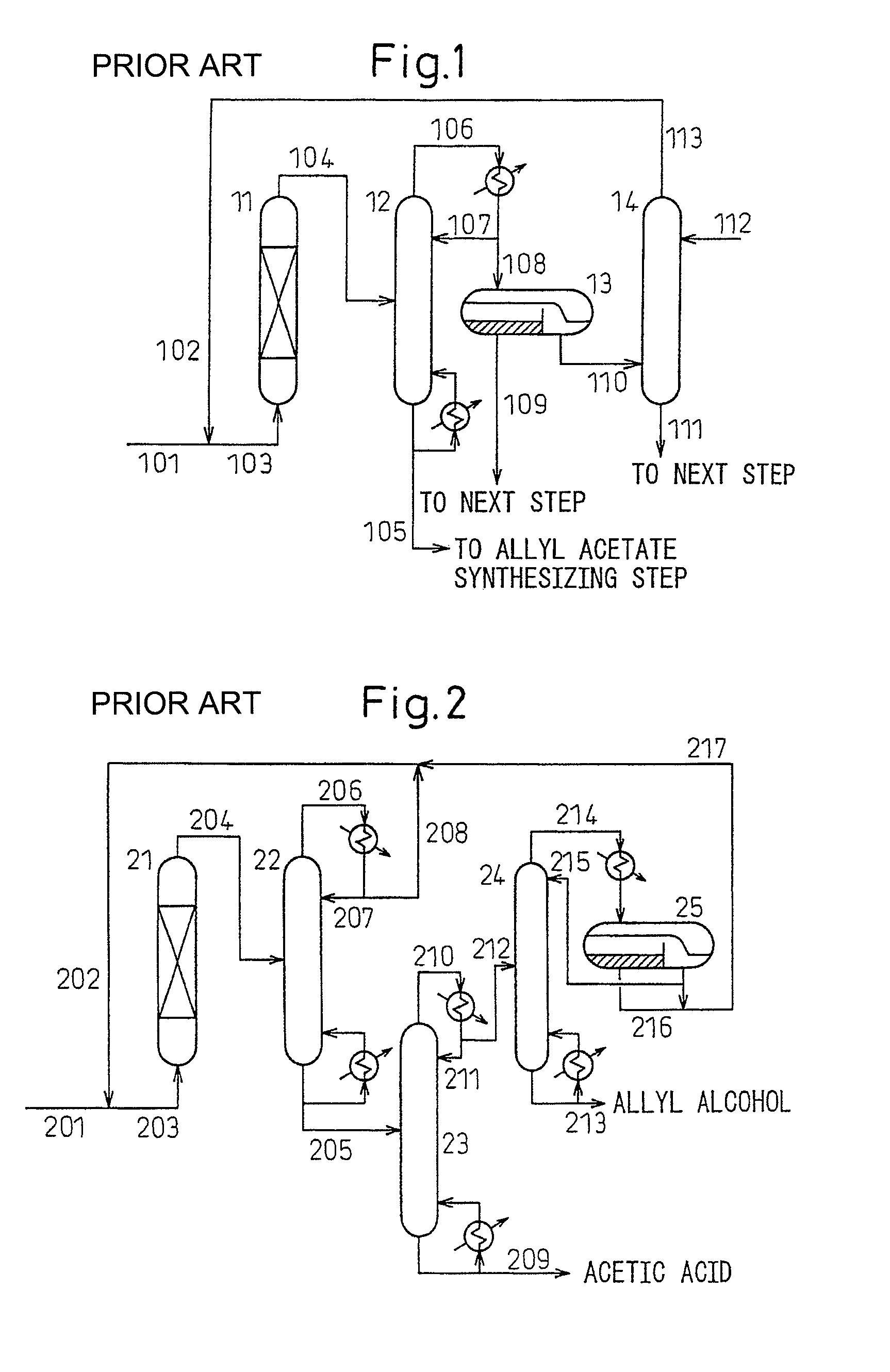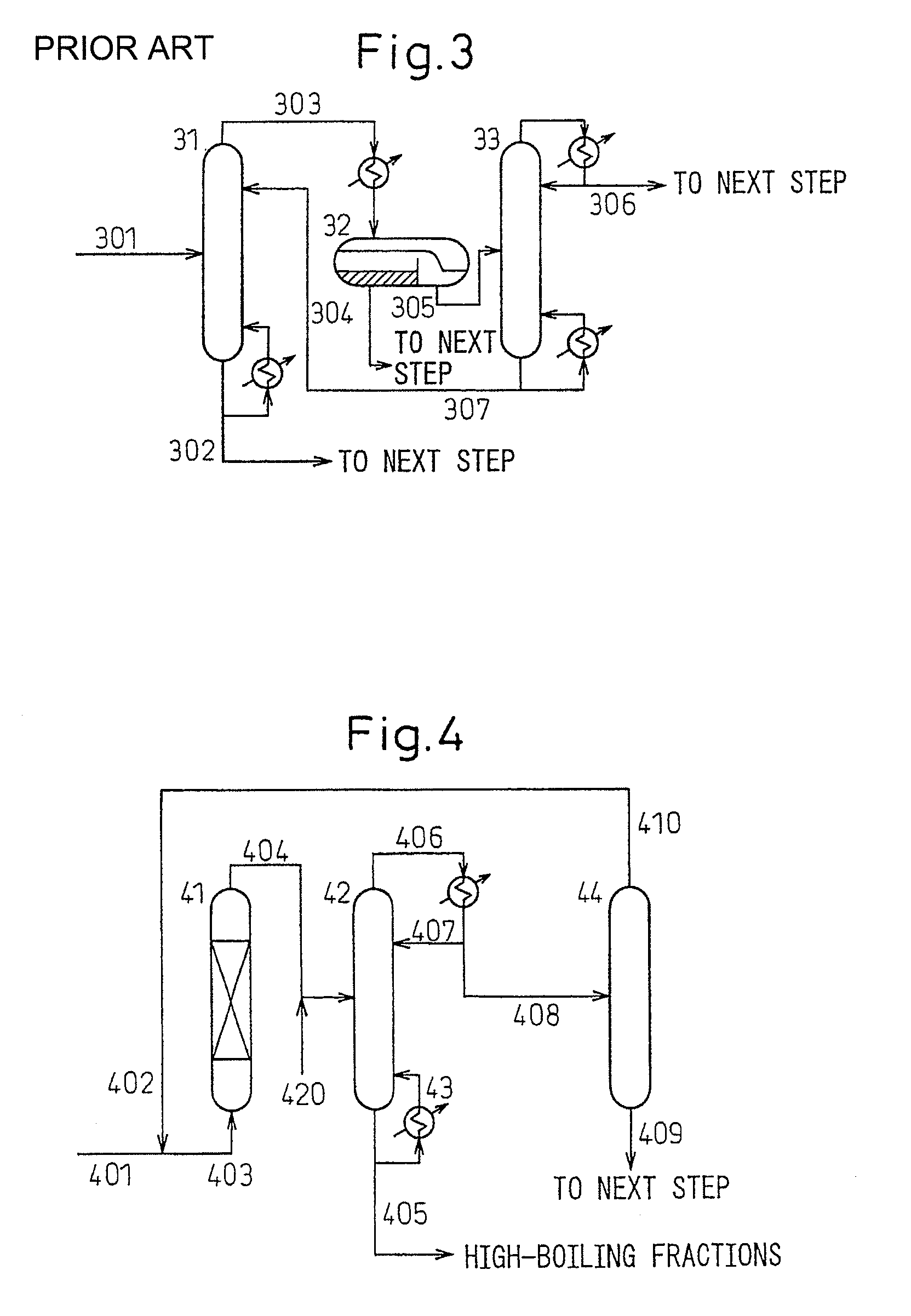Process for producing allyl alcohol
a technology of allyl alcohol and distillation process, which is applied in the separation process, vacuum distillation separation, organic chemistry, etc., to achieve the effect of reducing energy consumption in the distillation step and improving separation performance in the azeotropic distillation
- Summary
- Abstract
- Description
- Claims
- Application Information
AI Technical Summary
Benefits of technology
Problems solved by technology
Method used
Image
Examples
example 1
[0145]As Example 1, the present invention was practiced while referring to the allyl alcohol producing process of Patent Document 1.
CH3COOCH2CH═CH2+H2O→CH2═CHCH2OH+CH3COOH
[0146]Hereinbelow, this example will be explained while referring to nation FIG. 5, which is a flow diagram for illustrating Example 1.
[0147]Referring to FIG. 5, a reactant (501) containing allyl acetate which has been produced through an allyl acetate synthesizing step is mixed with an allyl acetate reactant (502) which has been collected from an extraction column (55) appearing hereinafter, and the resultant mixture is supplied to a hydrolysis reactor (51).
[0148]A strongly acidic ion-exchange resin is used as a catalyst in the hydrolysis reaction (51), and the reaction is conducted at 0.6 MPa, at a temperature of 78° C. and a residence time of 50 minutes. A flow (505) in which a reaction product liquid (504) and a part (520) of the allyl acetate which has been collected from the extraction column (55) are mixed, ...
example 2
[0153]The flowchart (flow diagram) shown in FIG. 6 is provided for illustrating Example 2. (In the explanation of FIG. 6, the parts or portions corresponding to those shown in FIG. 5 are denoted by the same reference numerals as used in FIG. 5, and the explanations thereof are omitted (i.e., not repeated).
[0154]As shown in FIG. 6, an experiment was carried out under the same conditions as in Example 1 with respect to the operating conditions of the hydrolysis reactor (51) and the decanter (54) and the flow rate of the column-bottom discharge (506) of the azeotropic distillation column (52), except that allyl acetate collected from the extraction column, represented by the flow (521), was supplied to the reflux (509) of the azeotropic distillation column (52) and that the sum of the flow rates of the flows (509) and (521) was set to a value equal to or nearly equal to the corresponding value (i.e., 509) of Example 1. At the time, the temperature in the column top of the azeotropic co...
example 3
[0162]An experiment was carried out under the same conditions as in Example 1 for 223 days, so that allyl acetate (such as flow (520), concentration: 97.3%) collected from the distillation column is supplied to the outlet (504) of the hydrolysis reactor (51), as an azeotropic entrainer. The amount of the product produced in this period was 100.0 mass parts per hour, on average.
[0163]The temperature in the column top of the azeotropic column (52) was 91.4° C., the temperature in the column bottom thereof was 116.9° C., and the pressure therein was 0.110 MPa. The pressure at the top of the extraction column (55) was 0.110 MPa. The amount of steam used in the reboiler (53) was 316 mass parts per hour on average, and the total amount of steam used in the allyl alcohol producing process (including the post treatment) was 356 mass parts per hour on average. Further, the recovery factor of the acetic acid from the column bottom of the azeotropic column (52) was 99.9%, based on the total am...
PUM
| Property | Measurement | Unit |
|---|---|---|
| temperature | aaaaa | aaaaa |
| temperature | aaaaa | aaaaa |
| temperature | aaaaa | aaaaa |
Abstract
Description
Claims
Application Information
 Login to View More
Login to View More - R&D
- Intellectual Property
- Life Sciences
- Materials
- Tech Scout
- Unparalleled Data Quality
- Higher Quality Content
- 60% Fewer Hallucinations
Browse by: Latest US Patents, China's latest patents, Technical Efficacy Thesaurus, Application Domain, Technology Topic, Popular Technical Reports.
© 2025 PatSnap. All rights reserved.Legal|Privacy policy|Modern Slavery Act Transparency Statement|Sitemap|About US| Contact US: help@patsnap.com



